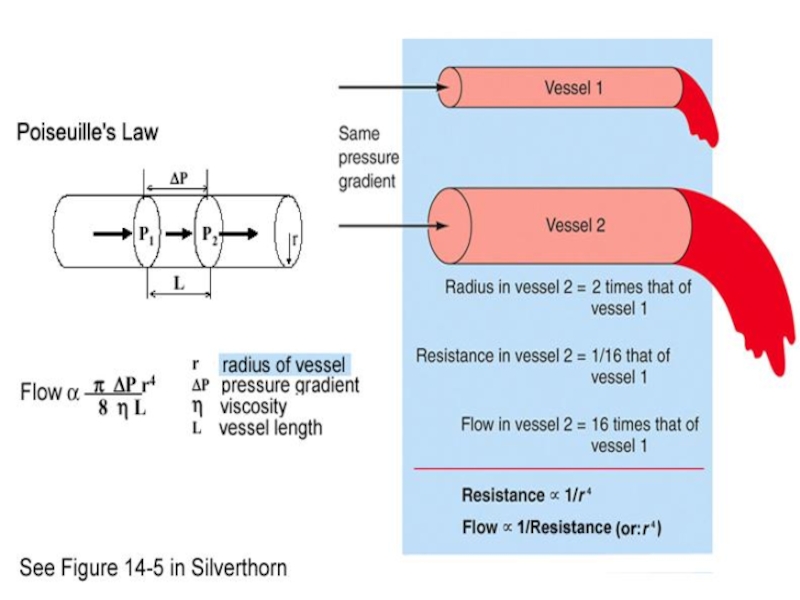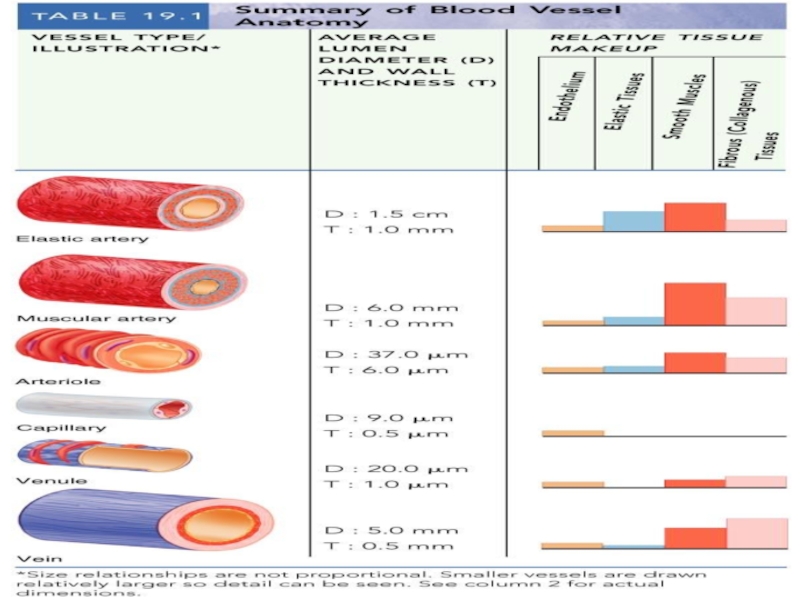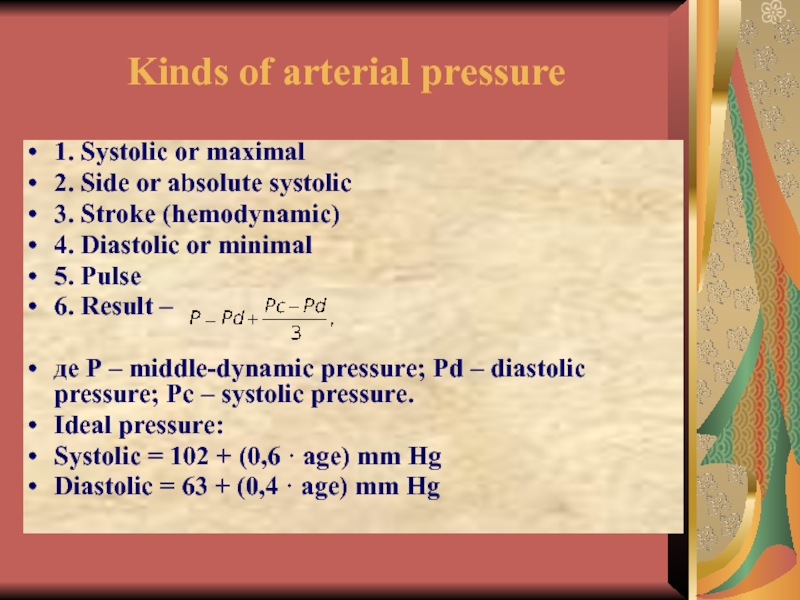- Главная
- Разное
- Дизайн
- Бизнес и предпринимательство
- Аналитика
- Образование
- Развлечения
- Красота и здоровье
- Финансы
- Государство
- Путешествия
- Спорт
- Недвижимость
- Армия
- Графика
- Культурология
- Еда и кулинария
- Лингвистика
- Английский язык
- Астрономия
- Алгебра
- Биология
- География
- Детские презентации
- Информатика
- История
- Литература
- Маркетинг
- Математика
- Медицина
- Менеджмент
- Музыка
- МХК
- Немецкий язык
- ОБЖ
- Обществознание
- Окружающий мир
- Педагогика
- Русский язык
- Технология
- Физика
- Философия
- Химия
- Шаблоны, картинки для презентаций
- Экология
- Экономика
- Юриспруденция
Physiological bases of hemo dynamic презентация
Содержание
- 1. Physiological bases of hemo dynamic
- 2. Kinds of blood movements
- 4. Formulas of hemodynamic
- 6. Vessel Structure Structure/function relationships change as one
- 11. Functional types of vessels Amortization or compensatory
- 12. Functional types of vessels Resistive vessels or
- 17. Arterial pressure Determine the influences of factors:
- 19. Vasomotor control: Sympathetic Innervation of Blood Vessels
- 20. Kinds of arterial pressure 1. Systolic or
- 21. Systolic pressure – pressure exerted on arterial
- 22. Classification of hypertension (1999)
- 23. Classification of hypertension (NHLBI, 2003).
- 24. Apparatuses
- 26. Korotkov Sounds caused by vibration collapse of
- 28. Sphygmogram Anacrota -а Catacrota b Incisura (i) Addition wave с or secondary increase
- 30. THANCK YOU!
Слайд 6Vessel Structure
Structure/function relationships change as one moves through the cardiovascular tree
Tunic
thickness and composition of the three layers are variable
Слайд 11Functional types of vessels
Amortization or compensatory vessels – arteries
Volume vessels or
veins
Exchanged vessels or Capillary
Exchanged vessels or Capillary
Слайд 12Functional types of vessels
Resistive vessels or arterioles, smallest arteries; lead to
capillary beds
Sphincters
Shunts
Arterial anastomoses provide alternate pathways (collateral channels) for blood to reach a given body region. If one branch is blocked, the collateral channel can supply the area with adequate blood supply
Sphincters
Shunts
Arterial anastomoses provide alternate pathways (collateral channels) for blood to reach a given body region. If one branch is blocked, the collateral channel can supply the area with adequate blood supply
Слайд 17Arterial pressure
Determine the influences of factors:
1. cardiac – systolic volume, speed
of blood ejection from the ventricles, heart beat;
2. vascular – elasticity of compensatory arteries, tone of resistive vessels, volume of volume vessels;
3. blood – volume of blood, viscosity, hydrostatic pressure of blood.
3. blood – volume of blood, viscosity, hydrostatic pressure of blood.
Слайд 19Vasomotor control: Sympathetic Innervation
of Blood Vessels
Sympathetic nerve fibers
innervate
all vessels except
capillaries and precapillary
sphincters (precapillary sphincters follow local control)
Innervation of small arteries and arterioles allow sympathetic nerves to increase vascular resistance.
Large veins and the heart are also sympathetically innervated.
capillaries and precapillary
sphincters (precapillary sphincters follow local control)
Innervation of small arteries and arterioles allow sympathetic nerves to increase vascular resistance.
Large veins and the heart are also sympathetically innervated.
Figure 18-2; Guyton and Hall
Слайд 20Kinds of arterial pressure
1. Systolic or maximal
2. Side or absolute systolic
3.
Stroke (hemodynamic)
4. Diastolic or minimal
5. Pulse
6. Result –
де Р – middle-dynamic pressure; Pd – diastolic pressure; Pc – systolic pressure.
Ideal pressure:
Systolic = 102 + (0,6 · age) mm Hg
Diastolic = 63 + (0,4 · age) mm Hg
4. Diastolic or minimal
5. Pulse
6. Result –
де Р – middle-dynamic pressure; Pd – diastolic pressure; Pc – systolic pressure.
Ideal pressure:
Systolic = 102 + (0,6 · age) mm Hg
Diastolic = 63 + (0,4 · age) mm Hg
Слайд 21Systolic pressure – pressure exerted on arterial walls during ventricular contraction
Diastolic pressure – lowest level of arterial pressure during a ventricular cycle
Pulse pressure – the difference between systolic and diastolic pressure
Mean arterial pressure (MAP) – pressure that propels the blood to the tissues
MAP = diastolic pressure + 1/3 pulse pressure
Слайд 26Korotkov Sounds
caused by vibration collapse of the arterial wall??
Korotkoff IV is
a better indication of diastolic pressure according to theory
However Korotkoff V is the commonly recommended measuring point except in pregnant patients because
It is associated with less inter-observer variations
It is easier to detect by most observers
However Korotkoff V is the commonly recommended measuring point except in pregnant patients because
It is associated with less inter-observer variations
It is easier to detect by most observers



































